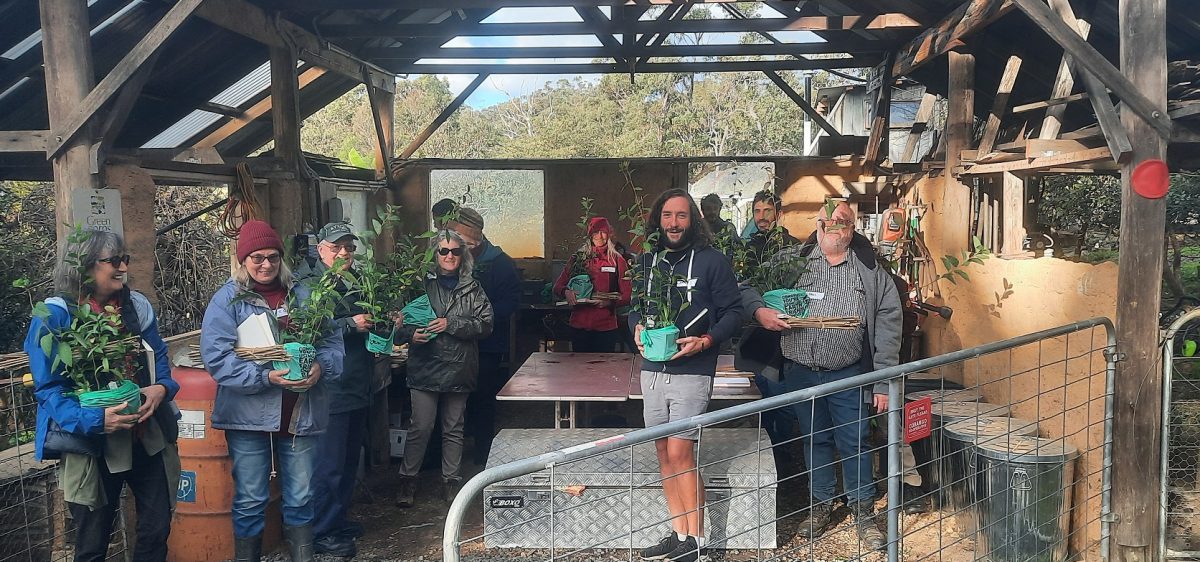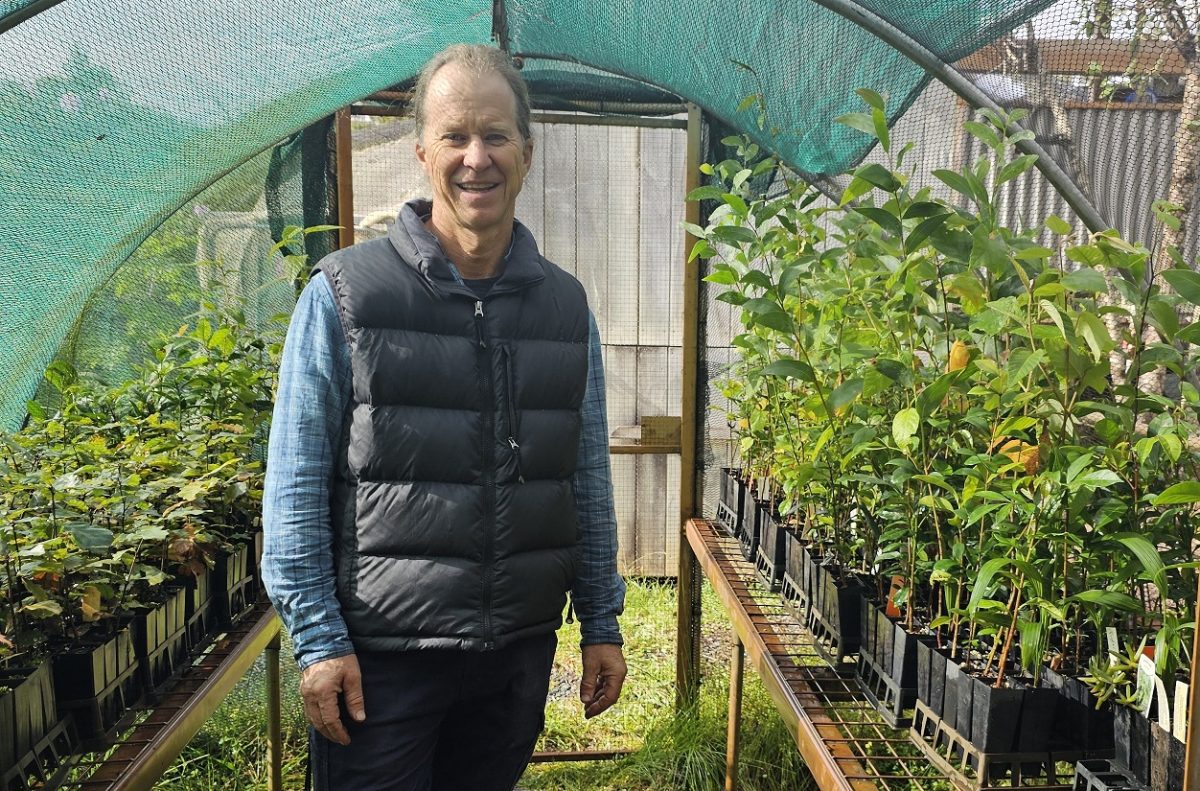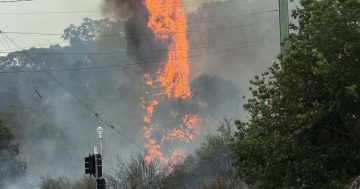
Dean Turner of The Crossing Land Education Trust talking to Dignams Creek Landcare members about shelter belts in April 2024. Photos: Supplied.
Climate change, with the associated increased frequency and severity of bushfires, requires landscaping differently.
To guide people along the correct path, Bermagui environmental not-for-profit The Crossing Land Education Trust (The Crossing) is holding free workshops on ”Firewise Landscapes”. Some surprising and useful insights came from a school project and wind tunnel.
Soon after the Black Summer bushfires, The Crossing’s project director Dean Turner gathered groups of people whose properties were on the edge of the fires. He thought it was the perfect moment to capture their learnings.
Those gatherings formed a hub of learnings that led to a series of workshops that began in 2020. The current series focuses on designing retardant landscapes in wise ways to prepare for fires.
The conventional wisdom of clearing land creates exposure to wind.
“Winds are increasing and will only get more violent over time, so while you still want a low-fuel area you don’t want to open too much to wind, you need shelter,” Mr Turner said.
Create shelter belts from retardant plants and trees. Typically these have rounder, fleshier, leathery or hairy leaves. Hair is an indicator of silica, which is a retardant. Avoid those with papery or thin leaves or volatile oils, such as many eucalypts and some herbs, including rosemary.
Shelter belts reduce the fire’s heat intensity, creating an opportunity to fight the blaze with other methods in the low-fuel area between the shelter belt, gardens and buildings. Mr Turner said considerable testing with wind tunnels had found the optimal airflow through a shelter belt was 50 per cent. That reduced wind speed and increased soil humidity over a larger area up to 12 times the height of the shelter belt. Too little airflow created greater turbulence beyond four to five times the shelter belt’s height.

Participants at the June 2024 Firewise workshop with gifts of native retardant trees.
Locate shelter belts in areas at greater risk from strong winds during fires, typically north to west on the east coast. Pools, water storage and frequently watered orchards can be similarly located, and wood stored in the south-east quarter.
“Just look at things through the lens of fire,” Mr Turner said. “Have I placed things in sensible locations?”
He has read research that clearly showed native plants fill up with water in half the time and need half the water.
“If you have the right retardant natives in strategic locations, you can give them extra water in advance and they pump up twice as quickly as trees from the northern hemisphere,” he said.
”If water is in short supply, plan to have it available in extra tanks and dams. Concrete tanks are the preference. Plastic ones melted, while steel ones ruptured and warped during the 2019/20 bushfires.”
Mr Turner said swathes and terraces created more drought-proof landscapes because “a lot of water is stored underground, which is very effective storage”.
Move water from hard surfaces such as footpaths onto soil.
“That keeps the ground more moist for trees and ground cover with retardant characteristics,” Mr Turner said.
His knowledge of retardant plants had its genesis in his son’s school project after there was a bushfire nearby in 2011.
“We decided to burn all the different types of leaves to see how flammable they were and made some surprising discoveries,” he said.
”That is what got me started, so after the bushfires I thought I had better get this information disseminated.”
He did that with the help of funding from the Cobargo Community Bushfire Recovery Fund.

Dean Turner with fire-retardant plants in the nursery at The Crossing.
Mr Turner also spoke to plant experts in his South Coast region. He asked for their opinions, to share their knowledge and to add it to what he had.
The project is supported by the Foundation for National Parks and Wildlife and has received funding from the Federal Government through the Preparing Australian Communities local stream.
The workshops attract people from Batemans Bay to Eden and inland to Bemboka.
“People are thinking now a little bit more about designing for extremes,” Mr Turner said. “That is the reality of the times. Predictions of the climate-change scientists are coming true.”
The last two workshops will be held on Saturday, 24 August, and Saturday, 19 October, from 11 am to 3:30 pm at 392 Nutleys Creek Road.
Book through thecrossingland.eventbrite.com.au.








